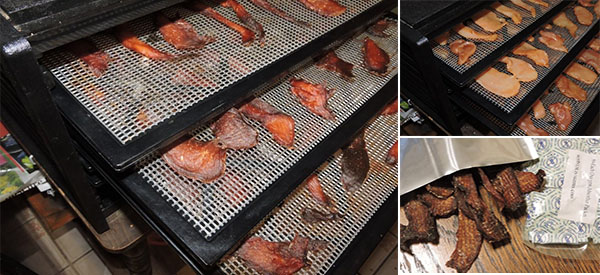Chicken is one of the most widely consumed meats in the world, although it is not a meat but a poultry, technically. You can go and buy chicken just about anywhere in the country. Part of that is quick chicken reproduction, because in six weeks it can grow to slaughter size. Another part is that chicken needs little attention, being able to drill and roost wherever they can find a low – hanging branch for their food.
All of this helps lead to chicken’s low cost, which in turn contributes to its success. It makes chicken a good choice for animal protein for those of us who are preppers; not just to produce it but also to have preserved chicken as part of our stockpile.
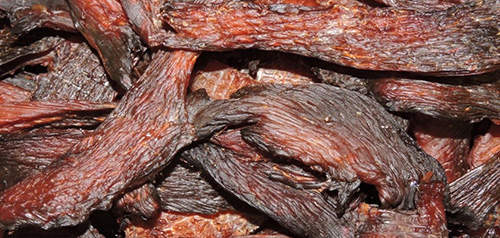

Meats are more difficult to maintain compared with fruits, grains and vegetables. However, over the years, a variety of meat preservation methods have been developed, most of which will work just as well for chicken as they do for any other meat type.
Because we are concerned about the chicken’s long-term safety, I’m going to use a combination of three different ways to preserve it. While I could get away with fewer, I’m increasing the chances by doing all three, that I’ll be able to store the cooked chicken for several years, without having to worry about it going bad in any way.
The Preserving Methodology
The three methods of preservation I’m going to use for my chicken are:
- Salt – Salt is a natural preservative, drawing moisture out of meat, through osmosis. This also draws moisture out of bacteria cells, killing them. By giving the dehydrated meat a salty surface, we can guarantee that any bacteria that comes into contact with it will die.
- Dehydration – Bacteria need a moist environment to survive. Dehydration denies them that environment, by removing the moisture from the meat they are living in. At the same time, it removes the moisture from the bacteria, killing it.
- Oxygen Deprivation – Some types of bacteria need oxygen to survive. But mold definitely does. So by creating an oxygen starved environment, we can not only reduce the risk of bacterial consumption, but eliminate the possibility of the chicken becoming moldy.
Preparing the Chicken
A simple thumb rule for drying chicken (or anything else in that regard) is that the thinner it is, the easier it is to dry out. For all practical purposes, a slice 1⁄4″ thick is about the thickest one can fairly dry. When it gets darker than that, it’s hard to get the piece center to dry out completely. That might allow it to harbor dangerous bacteria.
It’s not easy to cut the raw chicken into 1⁄4″ thick slices. It helps if a portion of the chicken is frozen. Around 30 minutes is enough time in a regular freezer to stiffen the meat with enough ice crystals to make it easier to deal with while at the same time keeping it pliable enough to be sliced. You do want to be working with a very sharp non-serrated knife, preferably a French chef’s knife.
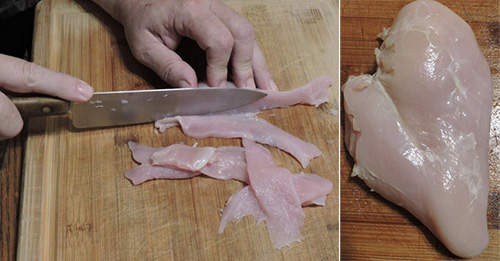

Before slicing the meat, remove all the fat. Fat can turn rancid, even when dried; so you don’t want to dry the chicken with fat on it. Chicken is nice in this, in that the fat only grows between muscles. You don’t see any marbling of the meat, like you do with beef.
Related: How Do You Know if a Canning Recipe is Safe
Adding the Salt
There are three ways of going about adding salt to the chicken:
- Using a marinate (salty condiments)
- Using a met rub (salt and spices)
- Using a brine (saturated salt water solution)
All three of those processes, as you can see, involve using salt. Personally, I prefer the meat to be marinated, but that may not be sufficient in all circumstances. If you reconstitute the chicken for use in soups and casseroles, the taste can improve with the use of a marinate. Likewise, most rubs have strong overtones of spice, and they can also alter the taste.
I have chosen to make the marinade of a mixture of teriyaki sauce, soy sauce and oriental orange sauce for the batch I do in connection with this article. Since I use low sodium soy sauce I add extra salt to the marinade.
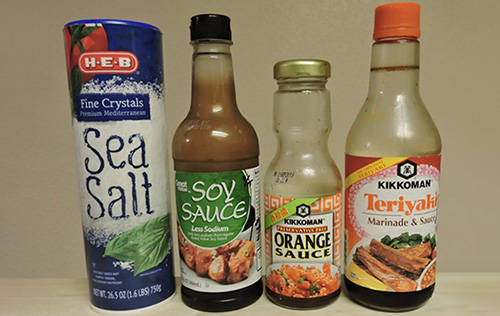

Whatever system you use, you need to make sure all the surfaces of each and every slice are coated. This will only occur if you dip the slices in the marinade mixture individually, then place them in a tub. Enable the container to sit overnight, so the marinate flavors can soak into the meat. During the night it is a good idea to mix the meat around a few times, to help ensure that all surfaces are coated.
As you can see from the picture, chicken marinating changes color. In this case, this is pure white meat, but the marinate took on a brownish hue.
Related: 4 Pemmican Recipes for SHTF
Dry Marinating the Chicken
The most popular way to dry the chicken is through a dehydrator. I tend to use one with a fan that allows the heated air to pass through meat racks. This helps ensure it dries the meat evenly. Less expensive dehydrators use only a heating element, located at the dehydrator’s bottom. In this way the lower racks get more heat and the meat dries faster. Although this is not a problem, it allows the dehydrator to be more attentive.
The prepared chicken is put on dehydrator racks, spread flat and not touching the pieces. If they touch, during the drying process they’ll glue together. If they’re not smooth they’re not going to dry uniformly.
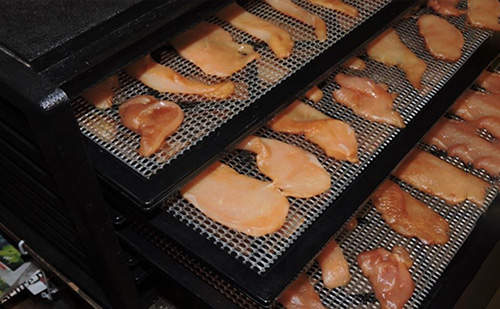

There are nine racks in this particular dehydrator, allowing me to dehydrate up to eight pounds of meat at once. I am using only five of the racks for this set.
Chicken should be dried at 160 to 165°F, as should other meats. This is hot enough to destroy any bacteria in or on the meat, as the bacteria are going to die at 158°F. Although the actual drying period for your chicken depends on how thick you slice it down, I think it usually takes six or seven hours to dry the chicken completely.
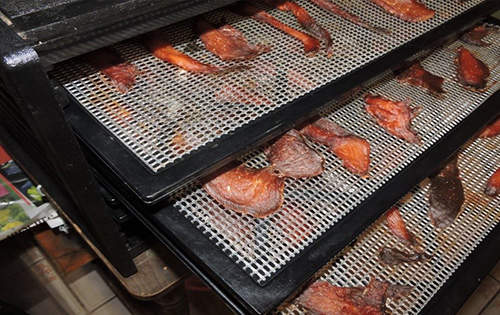

This is the same three racks of chicken, after being dried. As you can see, during the process the pieces of chicken shrunk considerably. There is also a missing piece in the corner which I would attribute to his product being checked by cooks. The chicken is very dark too. This is partially due to the marinate that I used for the chicken and partially due to my slightly “overcooking” the chicken.
Though I call that overcooked, when I dehydrate it I prefer to overcook chicken. Raw chicken is unhealthy to eat, because of its bacteria. Since dehydration is not cooking, I usually go for a slightly longer period of time to make sure it is fully dry and there is no chance of surviving bacteria.
Related: How to Can Chicken Chipotle Taco Meat
Dehydrating Options
While the use of an electric dehydrator is the most common means to dehydrate chicken, other methods are possible. For particular if you live in the south where you have very hot weather, a solar oven can be used effectively as a dehydrator.
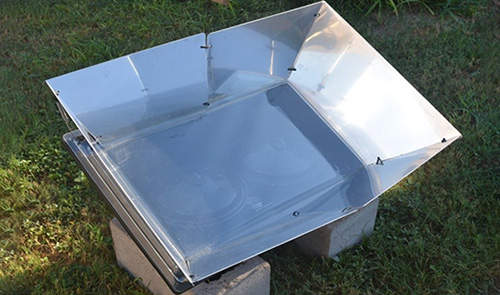

The American Indians used to dry meat in the sun, hanging it on wood poles. Although I doubt they’ve ever done it with chicken, they’ve done it with buffalo and venison. And I’m sure it will also work for chicken. However, it can not dry completely in one day without a hot sun. When this happens, you will need to take the chicken in and refrigerate it overnight, and return it in the morning to the drying racks again.
Eventually, dehydration in a normal oven is possible, if you turn the temperature down to its lowest level. The question here is that a dehydrator would be cooler in the lowest setting than in the hottest setting. And the chicken should continue to cook, rather than dehydrate. This problem can be mitigated by turning the oven regularly on and off.
Packaging the Dehydrated Chicken for Storage
To store the now dehydrated chicken for an extended period of time, it’s important to get it into an atmosphere that is deprived of oxygen. You want it to be packed at the same time in a way that stops bugs from coming in and eating it. There are two ways to do that; either packing it in a vacuum, or packing it in canning jars.
It is a safe idea to use a vacuum sealer to seal the jars while using canning pots. When you don’t have one, you can use oxygen absorbers to remove the oxygen in the bottles. Although usually used in aluminized Mylar bags when packaging food for long-term storage, oxygen absorbers work equally well in canning jars.
It is safer to use aluminized Mylar bags and oxygen absorbers for vacuum packing, rather than the usual bags that are used with a vacuum sealer. It is the same process used to seal other, long-term storage dry products. But, instead of filling a five gallon plastic bucket with six gallon containers, you’ll probably want to use smaller bags, like gallon sized ones.
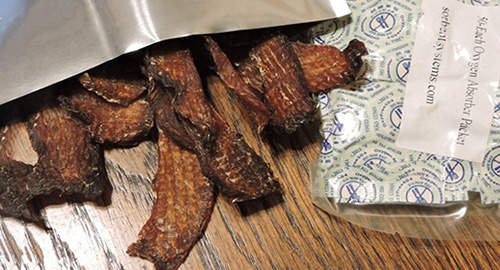

To use this method:
- Before starting, mark the bag with the contents.
- Fill the bag with dried chicken strips, leaving a 2” space at the opening for sealing it.
- Using a hair straightener or clothes iron, partially seal off the opening, leaving just enough room to fit a vacuum cleaner hose into the remaining space.
- Put an oxygen absorber into the bag, though the opening.
- Working quickly, stick a vacuum cleaner hose into the opening and suck out the air, being careful not to suck out any of the chicken or the oxygen absorber.
- Remove the vacuum cleaner hose and seal off the remaining opening with the hair straightener or clothes iron.
While I have not thoroughly checked any of these storage methods for 20 years, I have for 2 years and can testify that the chicken will remain good for at least that long. I can’t see any reason why it wouldn’t stay good for much longer without someone cracking the seal on the package.



